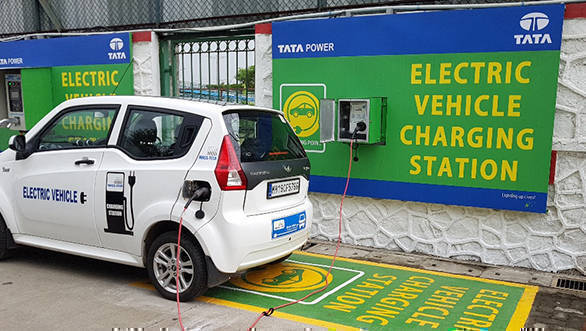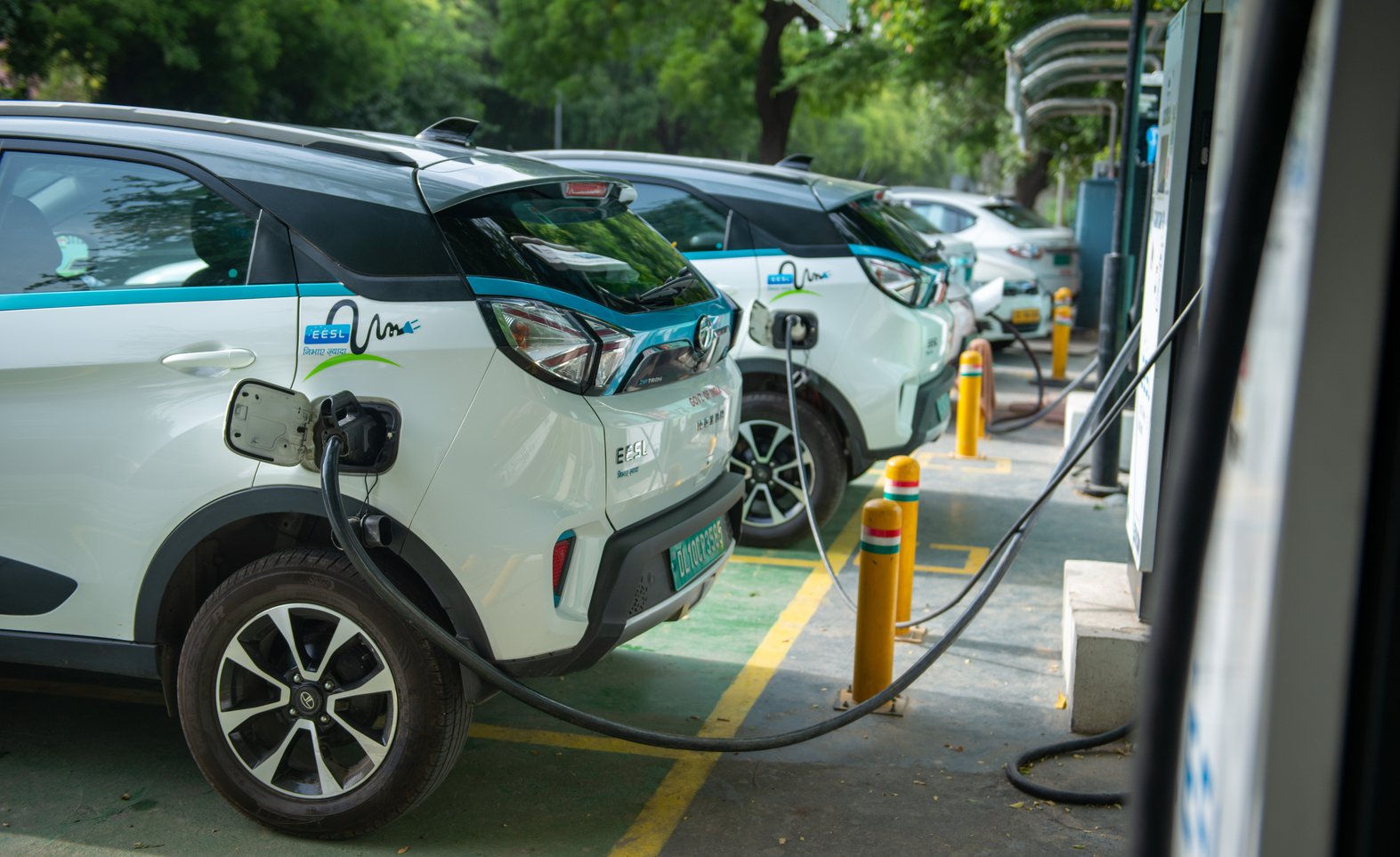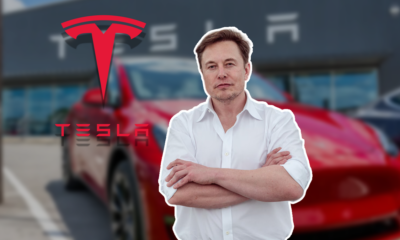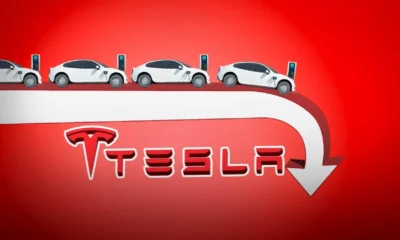Published
10 months agoon
Is India’s EVs Sector Losing Steam?
According to the recent data, the numbers paint a concerning picture. Between 2022 and 2024, funding for India’s electric vehicle (EV) sector has taken a significant hit, nearly halving as investors grow cautious. With policy shifts and slower sales growth, investors are now prioritizing unit economics and profitability over unbridled optimism.
According to Venture Intelligence, the sector saw funding drop to $586 million in 2024 from $808 million in 2023. While the number of deals remained steady at 44, the investment value pales in comparison to the $934 million raised in 2022, when government incentives had fueled bullish sentiment.
Policy Shake-Ups and Subsidy Cuts
The new PM-E Drive Scheme, rolled out in October, is designed to reduce the EV sector’s dependency on subsidies, replacing the earlier FAME-II programme. But the changes have been a mixed bag for the industry.
Under PM-E Drive, subsidies for electric two-wheelers are now pegged at Rs 5,000 per kWh, capped at Rs 10,000 in the first year. By contrast, FAME-II offered Rs 15,000 per kWh and covered up to 40% of a vehicle’s cost. This was later scaled back to Rs 10,000 per kWh and capped at 15% of the vehicle’s ex-factory price.
OEMs Bear the Brunt
Original equipment manufacturers (OEMs), who account for a large share of EV funding, have felt the sting of these policy shifts. The reduced incentives have disrupted business models and dampened investor enthusiasm.
Still, there are bright spots. Ather Energy raised $71 million this year from the National Investment and Infrastructure Fund (NIIF), making it a unicorn and setting the stage for its IPO.

The numbers tell an evolving story. While year-on-year EV registrations in India continue to rise, the growth rate is slowing due to base effects. Yet, the sector is far from stalling.
Government data from the Vahan portal reveals that more than 1.9 million EVs were sold in 2024—a 24.5% increase from over 1.5 million units sold in 2023. However, this growth is notably slower than the 50% surge seen between 2022 and 2023.
The electric two-wheeler segment remains a bright spot. With Ola Electric making history as the first Indian EV manufacturer to go public, the segment saw sales climb to 1.13 million units in 2024, up from 860,000 in 2023.
Global Context
Globally, EV sales growth is also decelerating, hindered by high costs, limited charging infrastructure, and regulatory uncertainties. Despite these challenges, volumes are climbing. BloombergNEF projects global EV sales to hit 16.7 million units this year, up from 13.9 million in 2023, making up 20% of all vehicle sales.
In India…
Optimism in India’s EV market remains high, driven by the government’s target of achieving 30% EV penetration in new vehicle registrations by 2030.
Key growth areas include –
Battery swapping: Particularly for gig economy sectors like quick commerce and food delivery, this subsegment is booming. “Battery swapping is capturing a large market,” notes Pulkit Khurana, cofounder of Battery Smart.
Charging infrastructure: Companies like Kazam EV Tech are scaling fast. This year alone, Kazam electrified over 400 million kilometers, managing 19 GWh of energy—a fourfold jump from last year. The company also raised $8 million from Vertex Ventures in August.
Component manufacturing and financing: These areas are also seeing increased activity and investor interest.

Problem Areas
While commercial users are finding EVs cost-efficient enough to justify their investment, the lack of a strong resale market remains a sticking point for passenger vehicles. “Addressing challenges like resale value and regulatory uncertainties will be key to sustaining long-term growth,” says Akshay Shekhar, CEO and cofounder of Kazam.
As of 2024, EVs constitute approximately 5% of total vehicle sales in India, with projections suggesting a potential rise to over 40% by 2030.
The Indian government has implemented several policies to promote EV adoption.
As of February 2024, India had 12,146 operational public EV charging stations, with Maharashtra leading in installations. However, to meet the growing demand, the Confederation of Indian Industry (CII) projects that India will need to install 1.32 million charging stations by 2030, requiring the addition of 400,000 charging stations annually.
The initial purchase price of EVs remains higher than that of ICE vehicles, even after accounting for subsidies and tax benefits.
Similarly, range anxiety persists due to the limited availability of charging stations, particularly in rural and semi-urban areas.
The absence of a robust resale market for EVs makes potential buyers hesitant, as they are uncertain about the long-term value retention of their investment. Also, inconsistent policies across states and potential changes in government incentives create an unpredictable environment for both manufacturers and consumers.
As per the latest GST on used cars, in the case of electric vehicles (EVs), the implications are even more severe. While new EVs enjoy a preferential 5% GST rate, resold EVs now fall under the 18% slab.
Thus, going forward, businesses involved in the second-hand EV market may find their profit margins squeezed further, especially since input parts and services for repairs already attract 18% GST.
The Last Bit
For India’s EV sector to truly take off, it needs more than subsidies—it requires a strong robust ecosystem, cost-effective technologies, and scalable business models. With investors tightening their purse strings, the race to make EVs mainstream in India has become a marathon, not a sprint.
Is India ready to go the distance? Time will tell.


Shakeup In The Auto Sector. Mercedes-Benz 15% Job Cuts, Nissan CEO Exit, And Germany’s Make-Or-Break Year


Tata Motors Tanks 44%: Is The Worst Over Or More Pain Ahead?


After A Tough Year In China, And Plummeting Sales, Can Tesla’s India Gamble Steer It Back On Track Amid Musk’s Controversies?


America Prepares For Trump’s 100 Executive Actions. Is The U.S. Heading Toward Corporate Dictatorship And Will These “Mandates” Lead To Violence And Tension Within America?


Why Is Sachin Bansal In Talks To Sell His $100 Million Stake In Ola? Potential Impacts On Ola’s Future Even As It Answers Valuation Concerns


Tesla In Trouble? Annual Deliveries Dip For The First Time, But China Sales Hit Record Highs—Can Elon Musk’s EV Giant Bounce Back?
